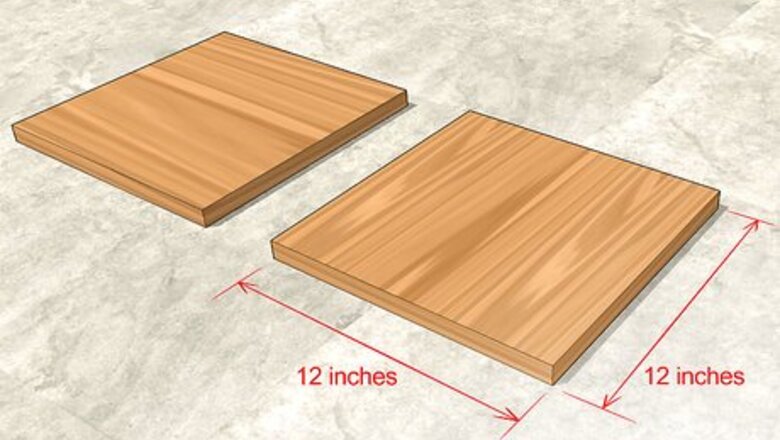
views
Fashioning the Press Covers
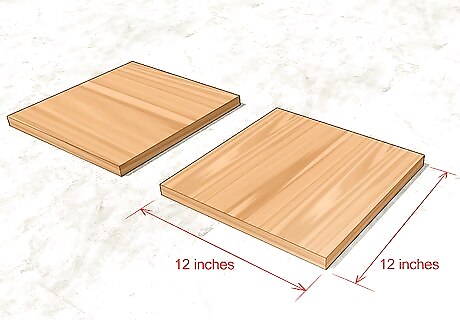
Cut 2 wood squares in the size you want for your press. Cut the wood with a table saw or a circular saw. You can make your press any size you want it to be, depending on the size of the plants you’ll be pressing. Between 8–12 inches (20–30 cm) should be big enough for most projects. For best results, choose wood that is ⁄4 inch (1.9 cm) or 1 inch (2.5 cm) thick. Visit your local hardware store and ask the employees to cut the wood for you if you don’t want to use a saw. Most hardware stores will perform this service for free.
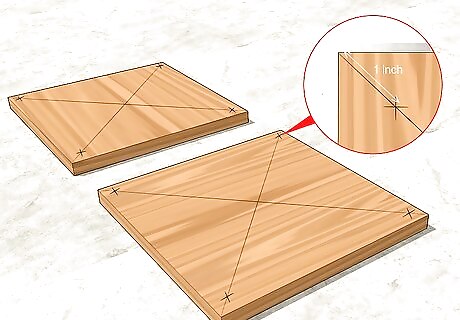
Measure 1 inch (2.5 cm) diagonally from each corner on both boards. Mark the spot with an X using a pencil. This will be the location for your drill holes.

Drill a hole through each of the marks. To ensure your boards will line up perfectly, drill through both of them at the same time. If you’re using ⁄4 inch (6.4 mm) bolts, use a ⁄16 inch (7.9 mm) drill bit. If you’re using a different bolt and you’re not sure what size drill bit to use, pick a bit you think is about the same size, then drill a test hole through a piece of scrap wood and make sure your bolt slides through easily. Adjust the size as needed.
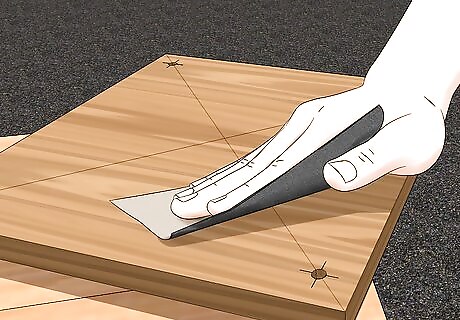
Sand the surface of the wood. Use a medium-grit sandpaper or a sanding tool if you have one. Make sure the wood is smooth, especially around the holes you drilled.
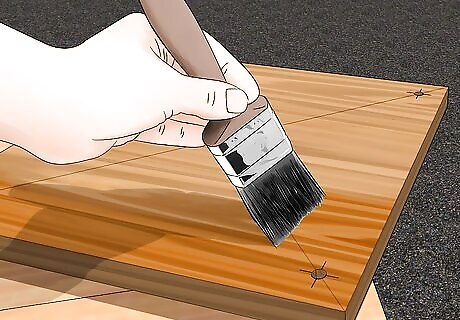
Stain or paint the wood if you want. You can personalize your flower press by staining or painting it any color you want. You can also leave the wood plain if you prefer. If you do use a paint or stain, allow the wood to dry completely before moving to the next step. Try decorating your press with stencils or cut-out illustrations of flowers.
Assembling the Flower Press
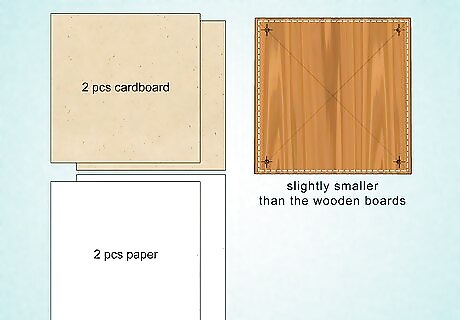
Cut 2 pieces of cardboard and 2 pieces of white paper to fit your press. The cardboard and paper should be slightly smaller than your press.
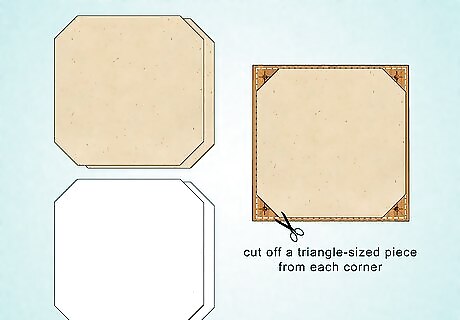
Cut the edges of your cardboard and paper off. Once the cardboard and paper are cut to size, cut away the corners so the paper and cardboard will sit inside the bolt holes. You should cut off a triangle-sized piece from each corner. When you're finished, the paper and cardboard should look like a square with the edges cut off. The paper absorbs moisture from the flowers during pressing. You can use any kind of smooth paper, including newsprint, blotting paper, tissue paper, or smooth coffee filters. Avoid paper towels or other textured paper because it may leave an imprint on the petals.
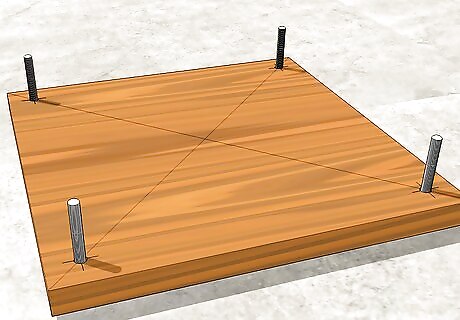
Place 1 piece of plywood on the bolts. Slide the bolts through the 4 holes on the first piece of board, then place the board on your work surface. The head of the bolts should be facing down.
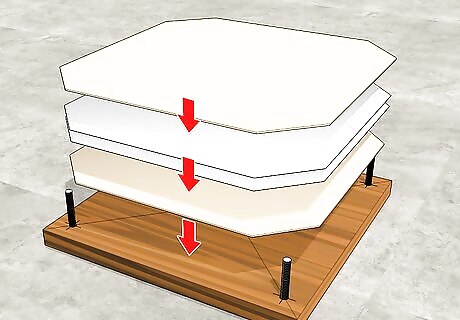
Layer the cardboard and paper on the press. You’ll add 1 piece of cardboard first, followed by the 2 pieces of paper. Top that with the last piece of cardboard.
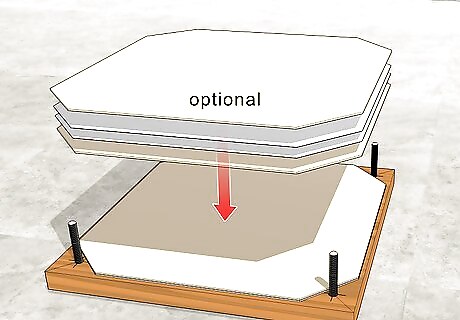
Add another layer of cardboard and paper if you want. You can add as many layers as will fit on your press. Just cut 2 more pieces of cardboard and 2 more pieces of paper and add them on top of the first layer. Even if you only make 1 layer at first, you can still go back and add another layer any time after you make your press.
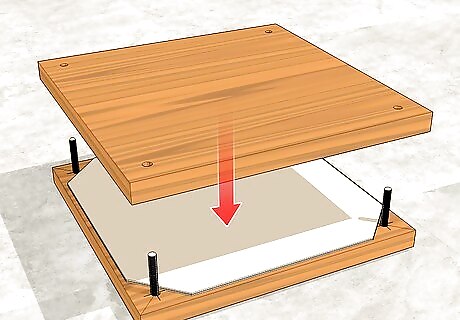
Top the press with the second board. Once you have added all the layers of cardboard and paper, slide the last board onto the bolts.
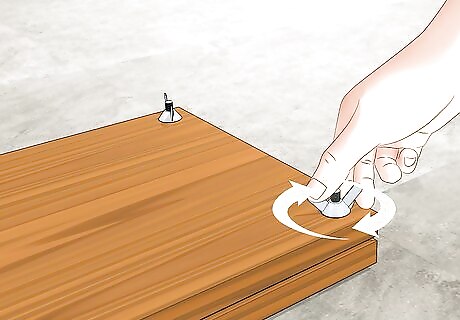
Place the washers and wingnuts on the bolts and tighten them. You’ll put down the washers first, then the nuts. Tighten the nut just until it feels secure. You don’t want to tighten them too much, as you’ll need to raise and lower the nuts in order to add flowers to your press. Wingnuts are designed to be gripped and can be tightened and loosened more easily than traditional nuts, but if you only have regular nuts on hand, you can use those.
Choosing Flowers to Press
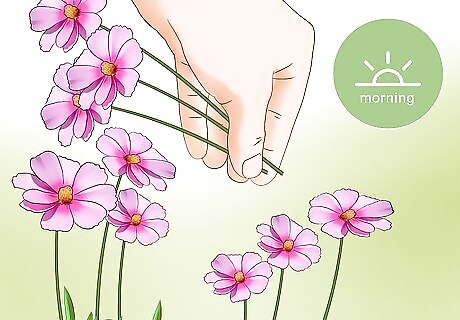
Pick flowers when they are dry. The best time to pick your flowers is in the morning after the dew has evaporated. This is when they will be the most fresh.

Harvest flowers when they are about to open or just before their peak. Pressed flower buds are lovely, as are flowers which are fully bloomed. Try to pick flowers in a variety of stages for a natural look.
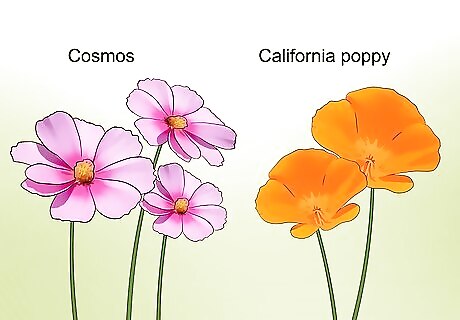
Select flowers with naturally flat blooms, like violets and daisies. Other flowers that press well include single-petal roses, Cosmos, California poppy, and Queen Anne’s Lace. Flowers with bulky blooms, like roses or carnations, take much longer to dry and don’t look as nice when they're pressed. You may want to hang them to dry them instead.
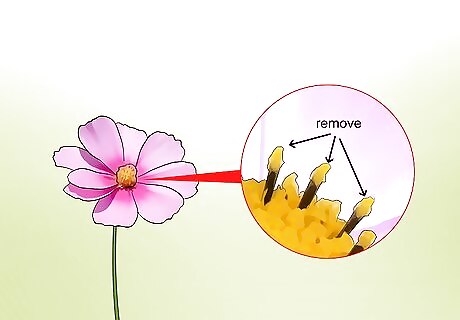
Remove any obvious stamens from your flowers. Some flowers, like lilies, have stamens which protrude from the petals. Remove these before you press the flower or the stamen will leave a stain on the dried petals.
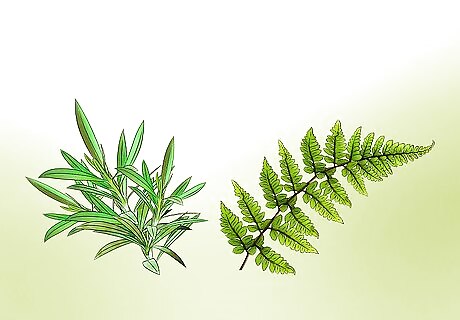
Press leaves, ferns, and grasses if you want to accent your flowers. If you're going to display your flowers in a frame, you can add other natural touches by drying leaves, grasses, herbs, and ferns in your press.
Pressing Your Flowers

Unscrew the nuts to make room on your flower press. You don’t have to take the nuts all the way off, just loosen them enough that you can slide the flower into the press.
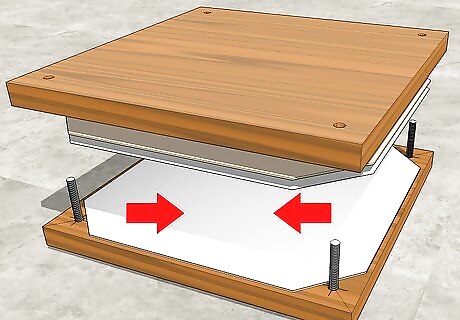
Place the flowers or leaves between the paper in your flower press. Make sure the flowers are not hanging off of the side of the press. Trim the stem or choose another flower if the one you chose doesn't fit on the press.

Do not overlap the flowers. Arrange the flowers on the paper so they are not touching each other, or else they’ll be stuck together when they’re dry.

Tighten the nuts to close the press. There's no need to force the nuts tighter than you can comfortably tighten them, but it should feel like it's secured. You may want to check the press every few days to tighten it more as the flower dries.
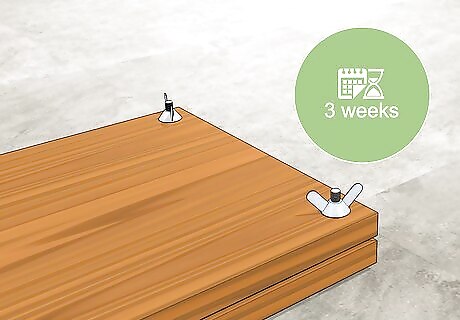
Leave the press undisturbed for at least 3 weeks. You want to allow the moisture in the plants to completely dry in order to preserve them.
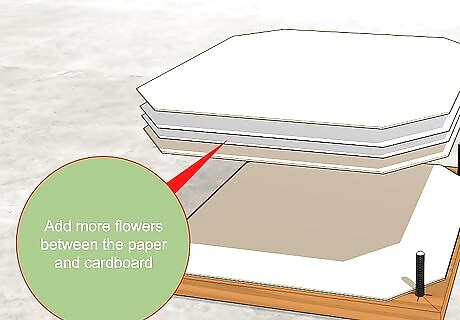
Add more layers of cardboard and paper if you decide to add more flowers. If you find more flowers that you want to press while you’re drying the first batch, add the new flowers to a different layer of cardboard and paper, and take care not to disturb the first set.

Store the flowers in a box or display them in a frame after they're pressed. Pressed flowers are very fragile, so you'll want to keep them in a safe place once they're finished drying. Store them in a box until you need them. Use pressed petals to decorate homemade cards, as a pretty touch in a handmade candle, or as decorative touches in a shadow box.













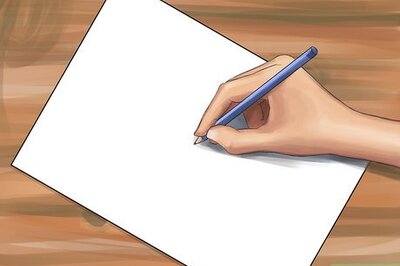
Comments
0 comment